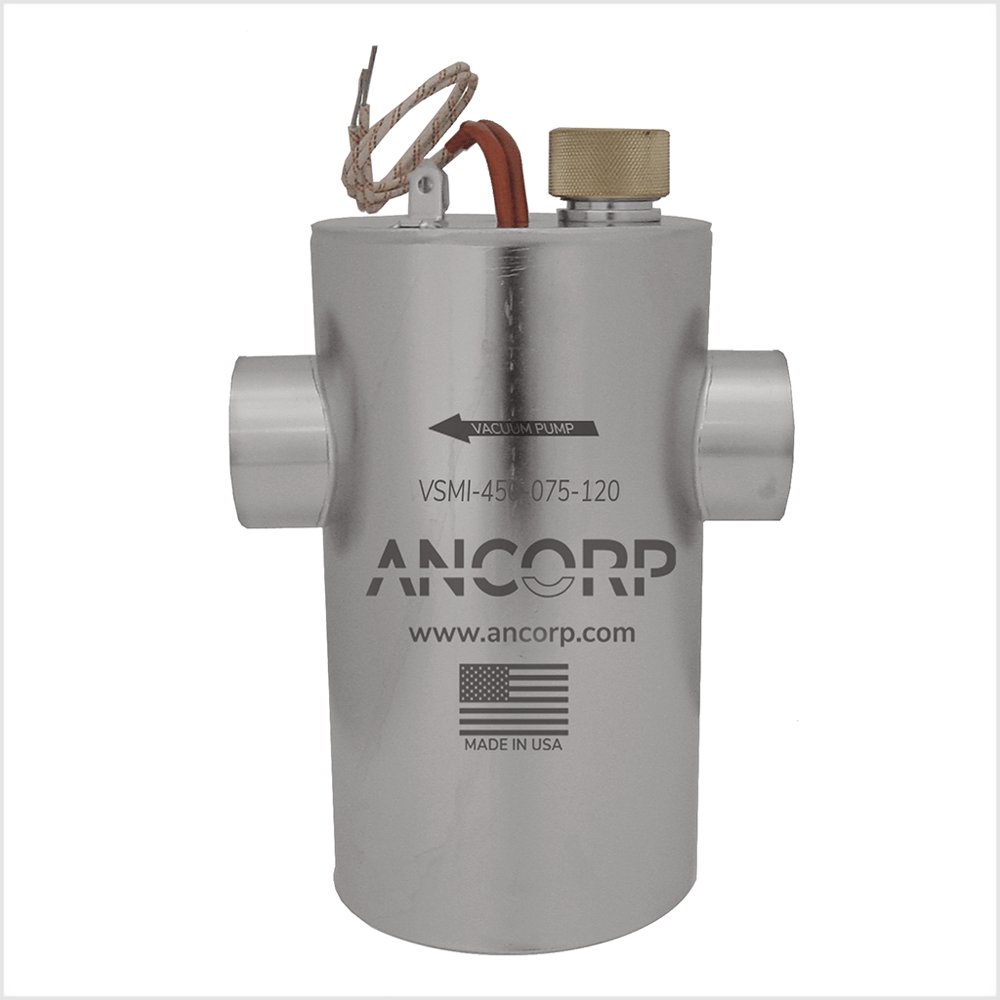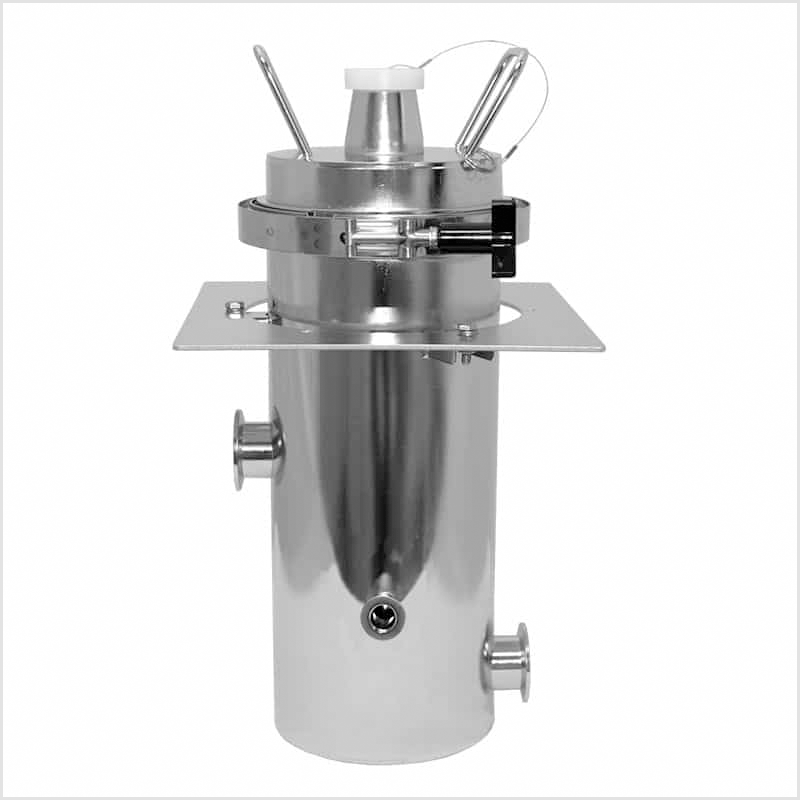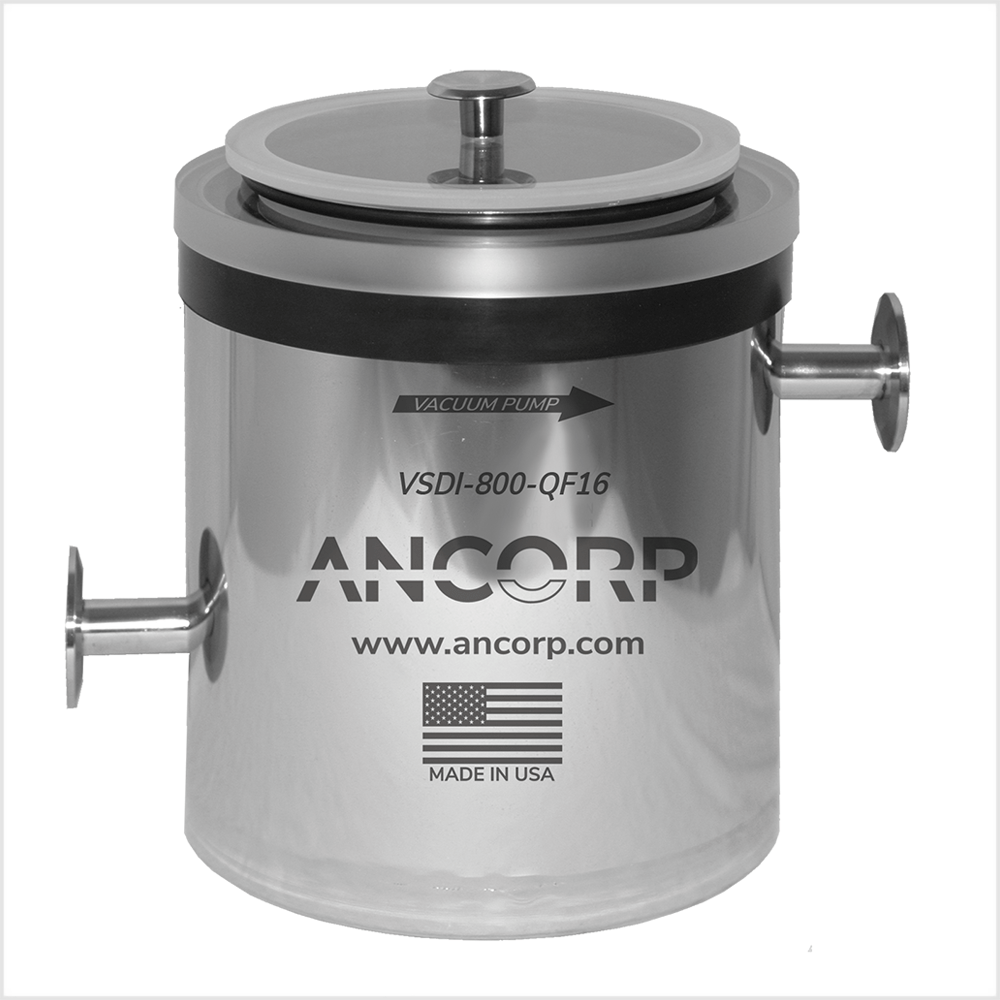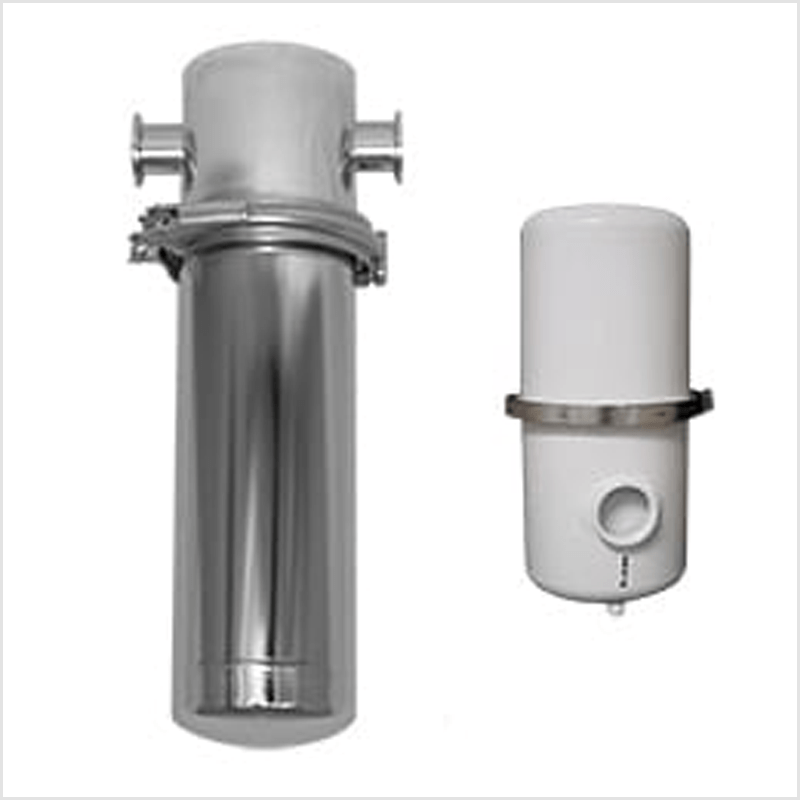Vacuum Traps and Filters
Traps vs. Filters: Product Overview
Traps and filters are devices installed on a vacuum foreline to serve two different functions:
- Traps: A trap is a device that is designed to capture vapors and gases.
- Filters: A filter is a device that is designed to capture or reduce particulates, dust, smoke, and aerosols.
Selection Criteria
When selecting a trap or filter, there are three selection criteria:
- Body style
- Coaxial, inline, or right angle
- Body Volume
- Large body volume: allows larger gas flows, higher conductance, and a lower frequency of media change outs
- Small body volume: smaller footprint
- Housing style
- Sealed traps: Ideal for light gas loads or intermittent use – discarded after the media has been consumed
- Rechargeable traps: Housing is reused and only the media is replaced.
- Port terminations
- Tube end terminations: for vacuum systems with a base pressure of 10-3 Torr or higher
- ISO-QF and ISO-LF terminations with elastomeric seals: for vacuum systems with base pressures between 10-3 Torr and 10-8 Torr
- ConFlat (CF) terminations: For vacuum systems with base pressures less than 10-8 Torr
- Media
- Activated Charcoal: recommended for organic effluents due to its affinity for organic molecules
- Stainless steel wool: can be used for extracting both PFPEs and hydrocarbons. It is susceptible to moisture saturation and cannot be packed tightly.
- Copper: Immune to moisture saturation but susceptible to corrosion. Compatible with applications that involve removing hydrocarbons; will not work with PFPE extraction.
- Alumina: Versatile filament that can be packed densely and has the ability to trap moisture. Recommended for applications involving hydrocarbon removal. Not recommended for high-moisture operations or applications that involve removing PFPEs.









